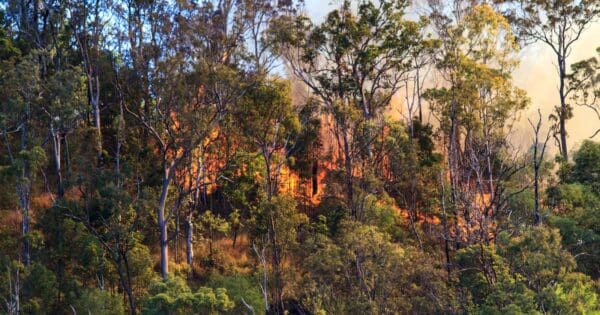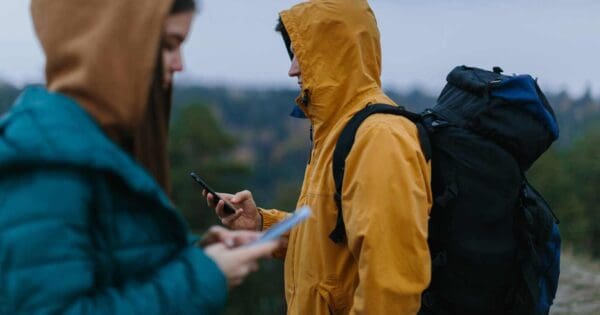Before venturing off the beaten track, it is important to ensure you are well prepared and carrying the correct safety equipment for all possible emergency situations. This includes a means of communicating an emergency to Search and Rescue Authorities.
In a life-threatening situation, two-way communication like a mobile phone or satellite phone is the most effective way of explaining your circumstances. When two-way communication is unavailable, activate a Personal Locator Beacon (PLB) to alert authorities of your location. But don’t forget to register your beacon!
The Australian Maritime Safety Authority (AMSA) manages the database of all Australian 406 MHz distress beacons with over 500,000 beacons registered. If your beacon is registered, AMSA can immediately ring your emergency contacts to obtain useful information that assists search and rescue authorities to coordinate an effective response. You can also upload trip plans and details on your online beacon registration account, which provides additional information if things were to go wrong. Beacon registration speeds up the response process, so it is essential to keep your registration details up to date.
An incident involving a snake bite victim in the Girraween National Park demonstrates the importance of following the correct steps in an emergency. On a recent school bushwalking trip, a 16-year-old girl was bitten by a snake and required medical attention. After alerting authorities by mobile phone, the school group was instructed by authorities to activate their distress beacon to assist the rescue helicopter in locating them. As verbal communications was their first means of alerting distress, authorities were aware of the emergency and were able to ensure the correct equipment was on board the helicopter to apply first aid and subsequently transfer the young girl to hospital.
Another important element to this rescue operation was the fact that the beacon was correctly registered. In this case, the group hired a beacon from a company who, once contacted by authorities, validated their information and provided their position and additional registration information to the Police. A registered GPS beacon, can make all the difference in a life-threatening situation.
To register your beacon or for more information, visit the Distress Beacons website at www.amsa.gov.au/beacons or phone AMSA on (02) 6279 5751.
You can also check out AMSA’s advice on “Things to know before you go” for land based activities.
How to prepare your beacon before your next adventure
Register your beacon: AMSA has recently improved the online beacon registration system to make it more mobile friendly for registering and updating your beacon information from your mobile, tablet or laptop.
Save your proof of registration: When required by law, providing proof of registration is easy. The four options are:
- SMS – Save your SMS registration confirmation on your mobile phone
- Email – Save your confirmation email on your mobile phone or tablet
- Print – Print your registration confirmation, or if you have no email, request a printed copy to be sent via mail
- Online – Check your beacon registration status online
Note: If you have an existing beacon registration sticker it will remain valid until it expires.
Update your registration details: Make sure your details are up to date in your online beacon registration account. This includes your contact details and emergency contacts. You can also now upload details about your trip plans and photos of your vessel or vehicle to help us identify you in an emergency.
Check your battery expiry date: Regularly check your battery expiry date and test your beacon as per the manufacturers’ instructions. Note that even if the light operates when you are testing your beacon after the battery expiry date, this does not guarantee your beacon will work correctly in a distress situation. So, make sure you service and replace the battery before it expires.
If you choose to replace your beacon, ensure that you dispose of it responsibly. Australia’s search and rescue system commits many hours and valuable resources searching for unwanted beacons in rubbish tips. This diverts important search and rescue resources away from real distress situations.
Accidental activation
If your beacon is accidentally activated, switch it off immediately and contact the Australian Maritime Safety Authority (AMSA) on 1800 641 792. There is no penalty for accidental activation.
Using Australian PLBs overseas
Beacons are detected world-wide by the global satellite system, Cospas-Sarsat, and are detected from anywhere on the Earth’s surface if they are deployed correctly.
Please note that it is illegal in some countries to carry or activate a Personal Locator Beacon (PLB) on land. Refer to the Cospas-Sarsat website for the appropriate SPOC (search and rescue or SAR point of contact) for the country you are travelling to and contact them to confirm you are legally allowed to use your beacon. You may also refer to the National Regulations for the Use of PLBs.
Search and rescue response in each country will vary due to different levels of SAR resources and capability. Check locally about the sort of SAR response you can expect. The response will also depend on the weather conditions at the time e.g. day, night, visibility (low cloud, fog, snow), high winds etc.
The rescue coordination centre of the country where the beacon is detected will coordinate the search and rescue response, not Australia. AMSA’s Response Centre will only provide the registration details, if known, and any other information it gathers from emergency contacts. AMSA will request information on the progress of the search and rescue.
Contact your chosen airline for guidance on carrying distress beacons as every airline and airport have differing requirements.
Using international PLBs in Australia
Internationally purchased beacons can be activated in Australia and Australia will coordinate the search and rescue response. However, your beacon needs to be coded and registered to your country of residence.
PLBs are a valuable safety tool for hikers in Australia. If you are planning a hike, be sure to carry a PLB and register it with AMSA. By following the tips above, you can increase your chances of being rescued if you ever need to use your PLB.
For more information, visit the AMSA website. For tips on keeping your beacon in perfect working order, click here.
Contributed by the Australian Maritime Safety Authority






I agree entirely. I fractured my leg a few years back, in an inaccessible area of the Northern Grampians. My beacon/communicator allowed me to raise the alert, location verified and for my partner and I to be quickly helicoptered out. This was the 1st time in over 30 years of regular hiking that I needed a rescue. I won’t go hiking without an operating beacon.